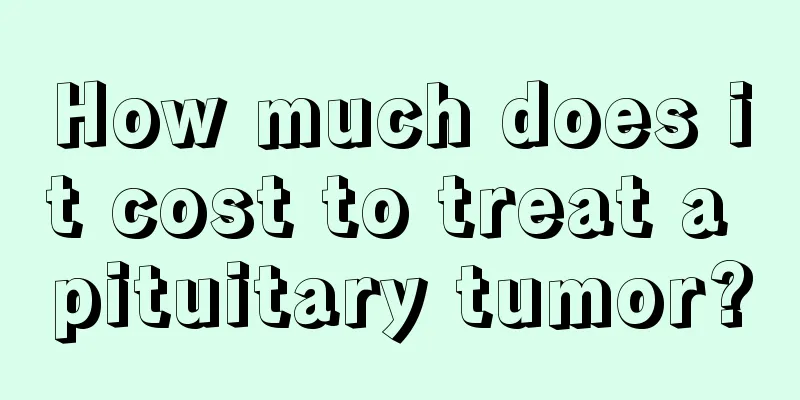Do you know the common knowledge about testicular cancer?

|
Do you know the common knowledge about testicular cancer? The emergence of testicular cancer has a serious impact on the patient's physical and mental health and life. Tumors occurring in the testicles are generally malignant. Therefore, for a disease like testicular cancer, we must learn more about it in order to take daily precautions. So, do you know the common knowledge about testicular cancer? The cause of testicular cancer is still unknown. It is currently believed that its onset is related to both genetic and acquired factors. Among them, cryptorchidism is the most closely related. The chance of developing tumors in cryptorchidism is 10 to 14 times greater than that in normal people. Cryptorchidism in the abdominal cavity is more likely than in the groin. Testicular fixation does not reduce the incidence of malignant changes, but it can make tumors easier to detect. The most common symptom is a gradual, painless enlargement of the testicles with a feeling of heaviness. About 10% of patients experience pain due to intratesticular bleeding or infarction, and 10% may experience metastatic symptoms, such as retroperitoneal lymph node metastasis and back pain due to compression of nerve roots. Pulmonary metastasis may cause cough and dyspnea, and bone metastasis may cause bone pain. Testicular Leydig cell tumors should be considered in children with testicular masses and symptoms of precocious puberty, or in adults with gynecomastia and loss of libido. Physical examination can palpate the enlarged, tough, heavy testicle on the affected side, and the transillumination test is negative. Testicular tumor markers, human chorionic gonadotropin (HCG) and alpha-fetoprotein (AFP) concentrations may be increased in the serum of patients with seminoma, choriocarcinoma, embryonal carcinoma or mixed germ cell tumor, respectively. B-ultrasound shows that the testicles are uniformly enlarged, the echo is enhanced but uneven, and the blood flow signal is strong. CT examination mainly observes the metastasis of retroperitoneal lymph nodes. It is currently believed that factors such as testicular germ cell abnormalities, elevated temperature, blood supply disorders, endocrine disorders, and gonadal dysgenesis may be associated with the malignant transformation of cryptorchidism. The relationship between cryptorchidism and testicular tumors has attracted the attention of scholars from various countries, who emphasize that orchiopexy before the age of 6 is an effective measure to prevent the malignant transformation of cryptorchidism, and has achieved significant results. |
<<: Is testicular cancer serious?
>>: What should thyroid cancer patients pay attention to
Recommend
What should I pay attention to when having my stomach removed for gastric cancer
The most common treatment for gastric cancer is r...
Pajamas are the key to women's health and happiness
So, how should women choose a pair of pajamas tha...
What is the treatment for WAS syndrome
WAS syndrome is still a very rare disease with a ...
Can breast cancer patients eat yam?
Yam has high nutritional value. Eating yam can su...
Does it look good to have thin upper lips and thick lower lips?
The upper lip is thin and the lower lip is thick....
Can mugwort be used to bathe infants and young children?
The baby's skin is very delicate, so skin dis...
How to remove brown acne marks
Everyone has gone through adolescence and has exp...
How much does it cost for radiotherapy for nasopharyngeal cancer and what should I eat?
How much does radiotherapy for nasopharyngeal can...
How to make sugar syrup
Many people know that white sugar may be used in ...
What should I do if my arm hair is too long
Some female friends have very long arm hair. In t...
What kind of exercises can patients with colorectal cancer do
Colorectal cancer is a tumor disease that is harm...
Who are suitable for medical abortion
We all know that there are many types of abortion...
Side effects of head radiotherapy
Radiotherapy is one of the more effective treatme...
What are the symptoms of pericarditis?
The heart is one of the important organs in our b...
Can café au lait spots be cured completely?
Café au lait spots generally appear as large spot...









